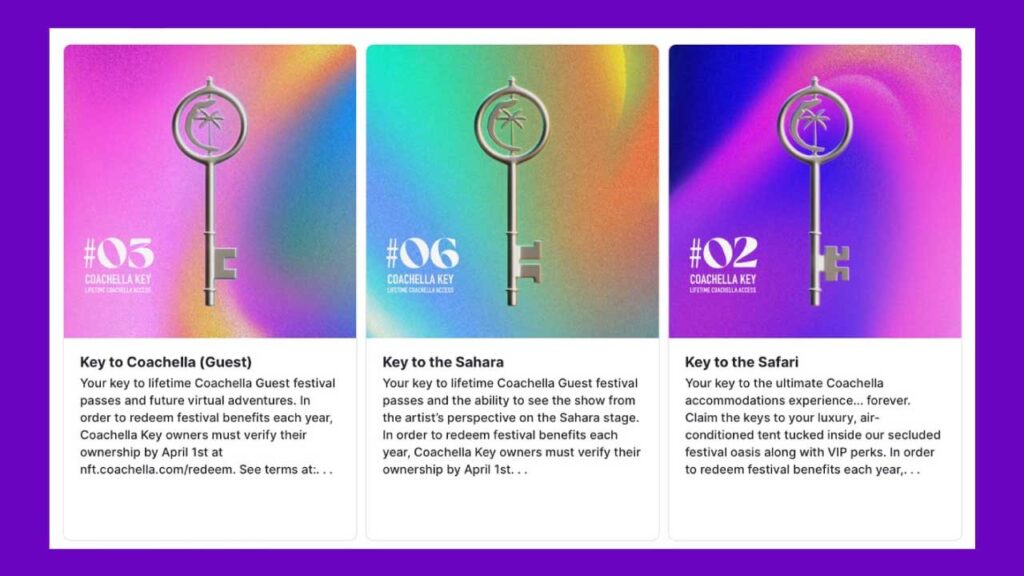Non Fungible Tokens aka NFTs were doing billions of dollars in monthly volume at one point in time.
But most of these tokens, aka ‘Cartoon JPEGs’, were and are just being traded in hopes of getting rich one day by dumping on the next wave of investors.
A 12-year-old made millions selling pixelated cartoon pictures, and an OnlyFans model raised 127 $ETH in the name of metaverse lands, before pulling the rug.
Yes, these speculation-driven assets aren’t creating any real-life value except by allowing gambling. And most of them are using NFTs as an option to print money out of thin air.
Ok, but that doesn’t mean there are no real-life legit use cases. There are.
The tech is strong and the opportunity is here, but it’s the way the NFTs are being used in many cases, that got the name bad.
Anyway, my point is there are ways to create value using these NFTs, and let’s see how can that be.
When people hear NFTs, the first vision that they get in their minds is a picture of some dumb animal.
I get it, CryptoPunks and Bored Apes have taken over the NFT world.
They are valuable because they have a historic (Punks – first 10k PFP NFTs ever) and brand (Snoop Dogg, Justin Beiber has an Ape, so I want one) value.
There are tons of 10k PFP NFT collections out there, but they aren’t as valuable as these two. And all these collections are scarce, as in only 10k.
Let me quote something I’ve read about artificial scarcity in an article:
Artificial scarcity taps into a deep psychological need that humans have to possess something that others don’t have. It’s a form of status signalling, and on a deeper level of resource acquisition that might put you in a better position in your life.
The point is if you own a Pigeon, you can’t talk about it much because not many people want to own a cartoon pigeon (yet).
But Apes, everybody wants it, and there are only 10k.

A first-generation iPod was sold for $29,000, and RM Sotheby has sold a 1962 Ferrari 330 LM/250 GTO, chassis 3765 for a whopping $51.7 million.
Now, you, me and even the buyers know that an iPod and a Ferrari don’t cost that much. They still go for it, because it’s scarce and it has some story behind it.
This NFT by Beeple called HUMAN ONE was sold for $29M. Yes, the physical setup and the digital version (aka the NFT) for 29 Million FUcking Dollars.
Now, you might be thinking:
“You can use the Ipod. You can drive the car. What can you do with an NFT? Why pay $29M?”
Well, I’d say:
“What can you do with Monalisa painting? Why can’t that buyer just buy a normal Ferrari?”

If an NFT is known to offer some exclusive experiences to the NFT HODLers, the NFT or the collection can become highly valuable.
If an experience is token gated, as in, you can’t have access to that experience until and unless you have that token (aka NFT) in your wallet, then you’ll have to buy it.
Right-click saving the picture won’t work.
Coachella is one of the largest, most famous, and most profitable music festivals in the world. And they decided to go with NFT Tickets, instead of just digital tickets.
They’ve launched 3 NFT collections and NFTs from each collection NFTs offer different benefits to the buyers and holders.

ETHJETS (Jet Me) is another good example. They’ve launched their membership NFTs that give you access to charter their jet with major discounts.

The list goes on and on, with many businesses using NFTs to benefit both businesses and customers.
On September 30, 2021, Dolce & Gabbana sold a nine-piece fashion collection—consisting of both real outfits and their NFT doubles—for about $5.7 million.

This model of pairing NFTs with Physical items is generally referred to as Phygital NFTs, in the NFT space.
Doing this with NFTs can be used in their loyalty programs, offering exclusive rewards and benefits to loyal customers aka NFT HODLers.
When it comes to virtual goods, the gaming ecosystem and players will benefit a lot, as NFTs give each individual player to own their item and easily trade.
They don’t have to rely on 3rd parties to facilitate the transaction.
And if the NFTs are interoperable, as in if they can come in the form of cross-game use, the NFTs aka weapons, skins, or other items can be used in multiple games. Not just in a single game.
What about services?
Ethereum Naming Service aka ENS is a very good example of this. You can buy a .eth name and attach it to a wallet address. For example, my ENS name, sujith.eth is linked to my wallet address “0x…whatever”.

Ok, but how about actual services?
Soapy Joe’s is a car wash company based in San Diego. They have introduced a unique promotional campaign that leverages NFTs to enhance customer interaction and reward loyalty.

While NFTs have garnered immense attention and speculation, much of the market revolves around trading for profit rather than genuine utility.
However, avenues for creating real value exist, such as leveraging scarcity and storytelling, offering exclusive experiences through token gating, and integrating NFTs with tangible products or services.
Despite the mixed reputation, NFTs hold potential for innovative applications beyond mere speculation.